
The rhetorical analysis is everywhere andis a method of describing the context in which an author wants to communicate their purpose or call for action to the intended audience in a genre (Arola, Sheppard, Ball 22). We use it to analyze text that you read or media you listen to or watch. According to Writer/Designer, “the five areas to address -audience, purpose, context, author, and genre…” I analyzed the website catholiccharities-md.orgthat provides a strong sense of audience, purpose, context, author, and genre by using organization and persuasion to help their users learn more information about their organization.
AUDIENCE
The audience, according to Writer/ Designer “is the intended readership for a text.”The Esperanza Center is a non-profit organization who’s intended audience would be people who want to donate to this organization since they have that option on their main page. The author tries to get the intended audience’s attention by using the donate button and explaining their mission. I believe the secondary audience are religious members (Catholic) because they want to help their Catholic community or political advocates. The Catholic people are drawn in mainly because it’s an organization created by the Catholic Church. They provide more information about the catholic charity under “our History” tab. There is also a page for users to go to that says “Advocate” to show the user their intended purpose for this organization. I feel they achieved this area because looking at their mission and stories about how they’ve impacted the community draws a bigger picture that they are determined to help their community and I would want to donate since it’s easy to get to that donate button and everything is right there on the landing page (home page).

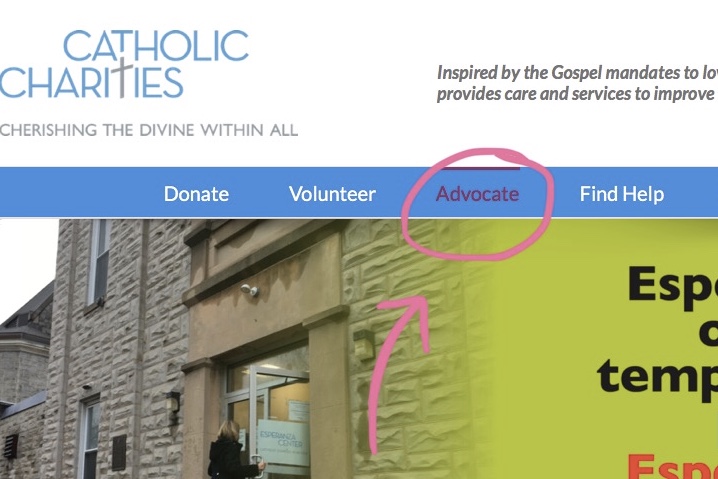
PURPOSE
Purpose is the overall intention of the author in their text (Arola, Sheppard, Ball 22). Esperanza Center of Baltimore’s purpose is to help serve the families within Baltimore and to who help like the “people living in poverty, individuals with intellectual disabilities, immigrants and seniors.” Their mission is noticed on their homepage which allows users to understand their mission which brings the community together to help those in need within the Baltimore area. They add how many people are involved in this process to thank them which sounds genuine. I think they did good in serving the purpose of trying to get people to donate and pushing their mission statement with testimonies on the website. The idea is to get new people to donate and with their testimonies and commitments show new people they are a dedicated organization built on helping the Baltimore community.
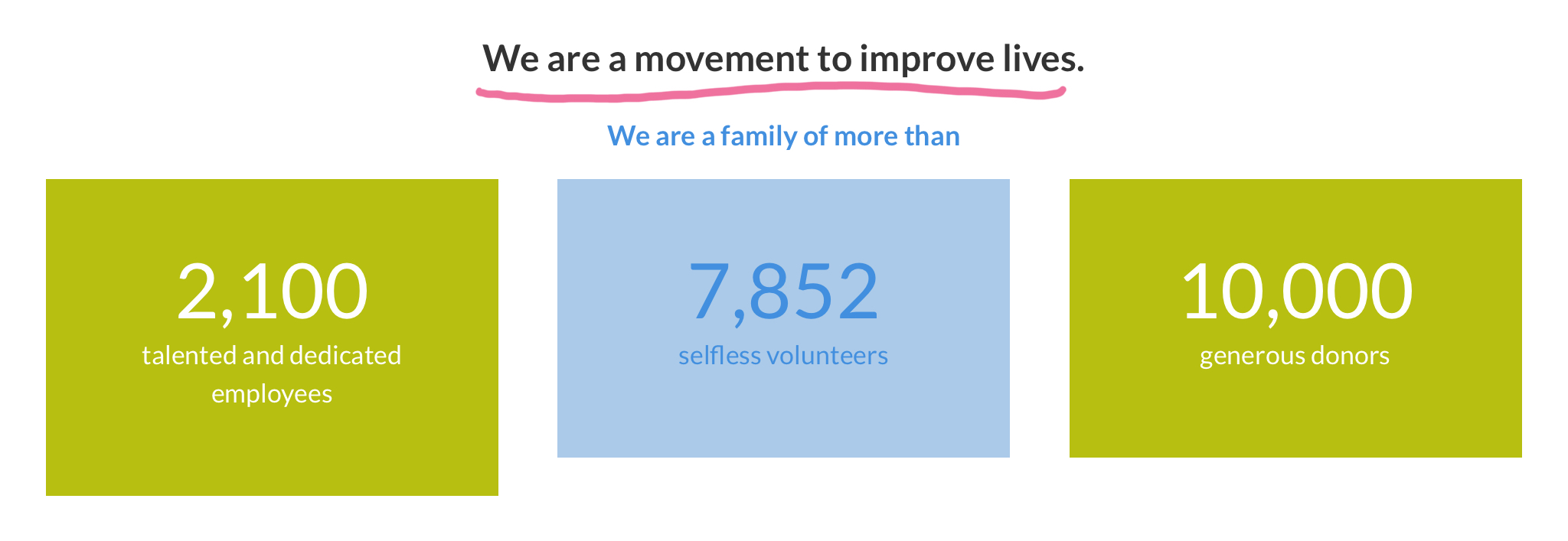
CONTEXT
Based on Writer/ Designer, the context is the what, where, and how of the source. Inthis source, you would it online since it’s a website which allows users to be interactive between the pages rather than a magazine. I feel the author chose to use a website to be able to reach everyone on the online community and spread the word rather than our own community. Where can they see this? They can read and look at content while sitting at a desk on their computer or on the go using their phones or tablets. This source would be found under non-profit or religious websites that surrounds the idea to help others in the Baltimore, Maryland. I think this was good because the author needs to think ahead of our time and do things that would be used later on. The use of flyers and advertisements are great but to be able to reach the greater mass, the use of the internet is the ideal way to go. The author achieved that by creating the website for public consumption. Below, you can see there is the mobile device version and desktop version which shows that they are both accessible not matter which medium you decide to view it on. That helps the user because they can access it anywhere and there are multiple ways to view it.

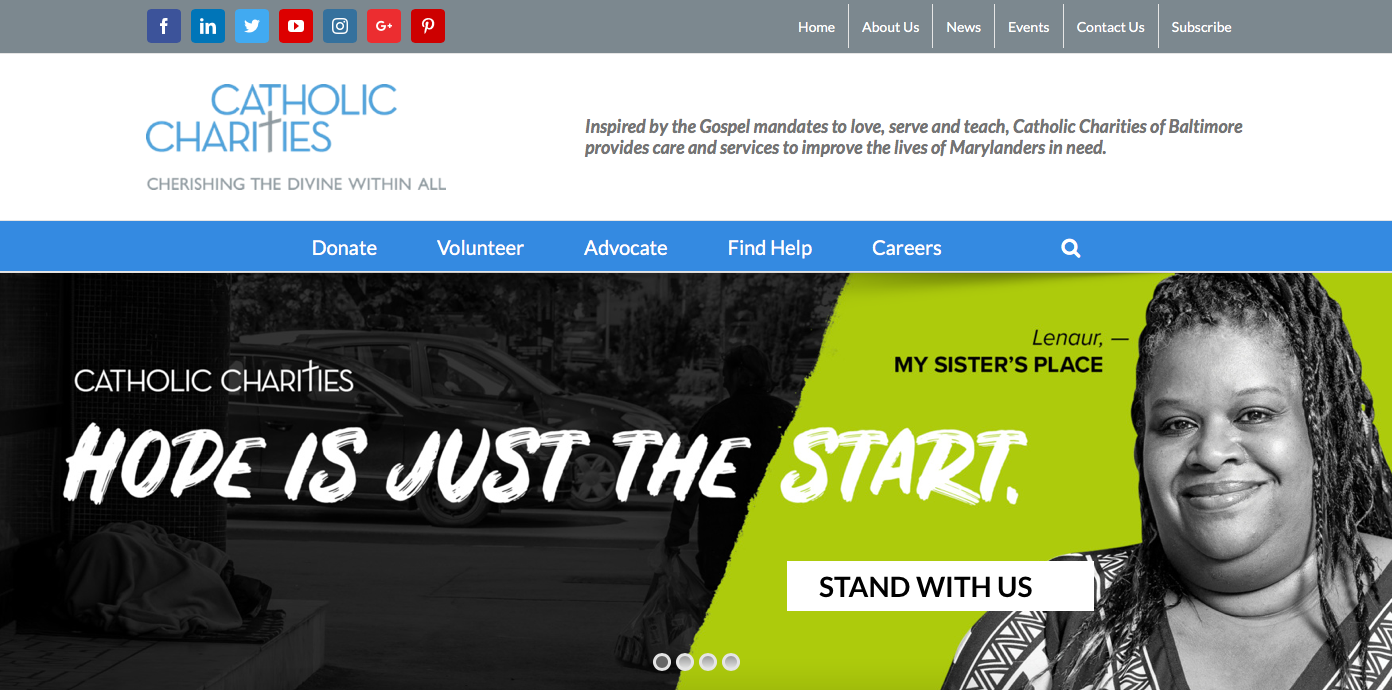
AUTHOR
To find out who the author is of the Esperanza Center was a little difficult to know whether he is behind this whole website. The believe the intended author is William J. McCarthy Jr. who is the executive director of the Esperanza Center. You can locate a picture of him and the organization’s contact information on the “about us” page. The addition of a letter format on the “about us” page signed by Mr. McCarthy adds a personal and authentic touch to the site. Mr. McCarthy also has more information about him on one of the links below his letter and also has a blog where he posts many things as to their mission and what the catholic church does to help others. However, I cannot tell if he is a credible source since he is the executive director, he does have a bias towards his organization. Since, they are trying to reach out to their audience to get more attraction, it’s safe to say that bias would be a great choice to make an organization better than it probably is. The purpose for the Esperanza Center is to get the attention of the primary and secondary audience which they succeeded in with the number of donators and contributors they have within their organization.
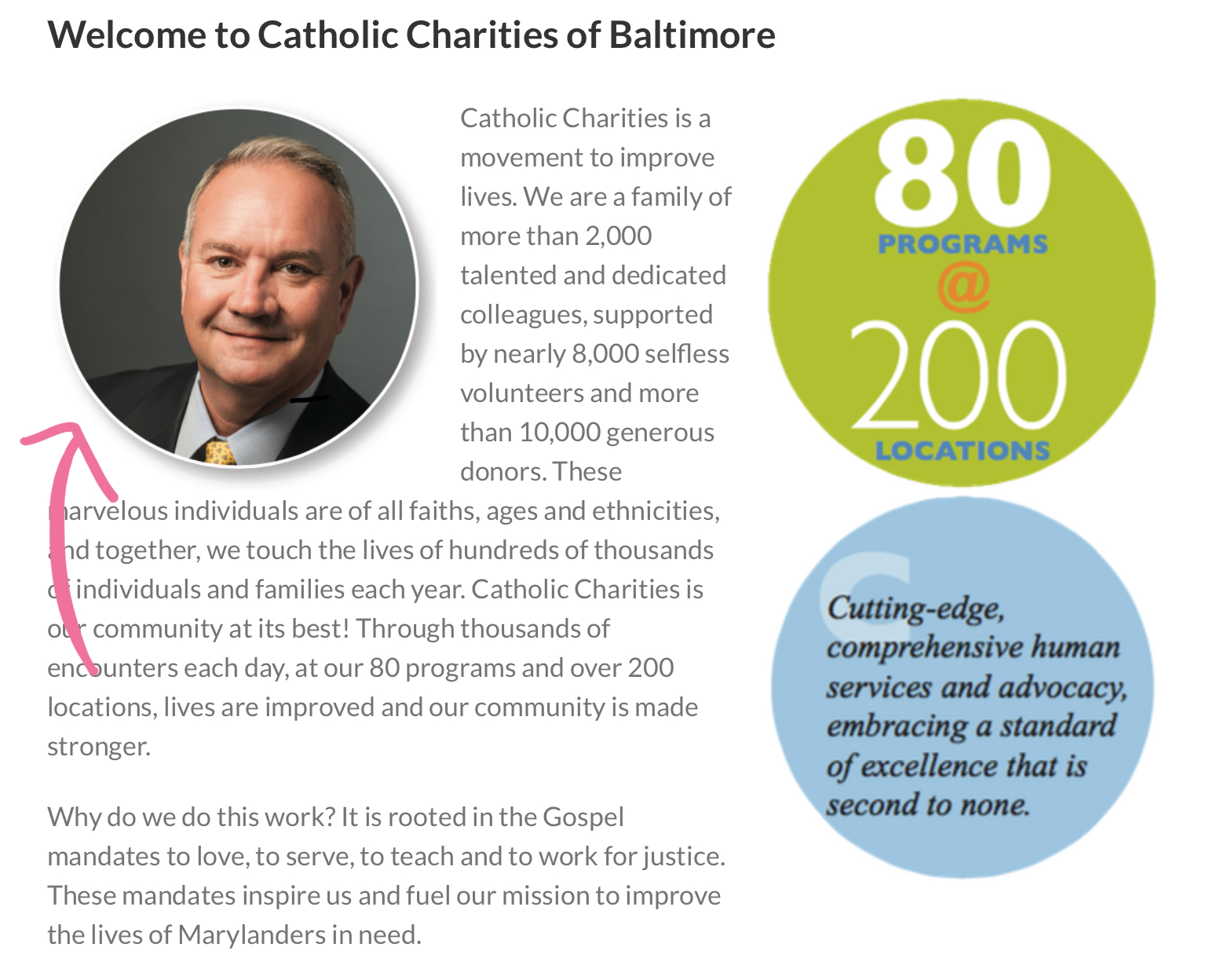
GENRE
The genre “helps us recognize how to group similar texts and understand their communicative purpose” (Arola, Sheppard, Ball 22). The Esperanza Center is projected as a non-profit and religious genre. Based on the business dictionary website, non-profit organizations are “association, charities, cooperatives, and other voluntary organizations formed to further cultural, educational, religious, professional, or public service objectives.” I feel that this was accomplished because the website follows what other non-profit organizations use as their template for their websites.
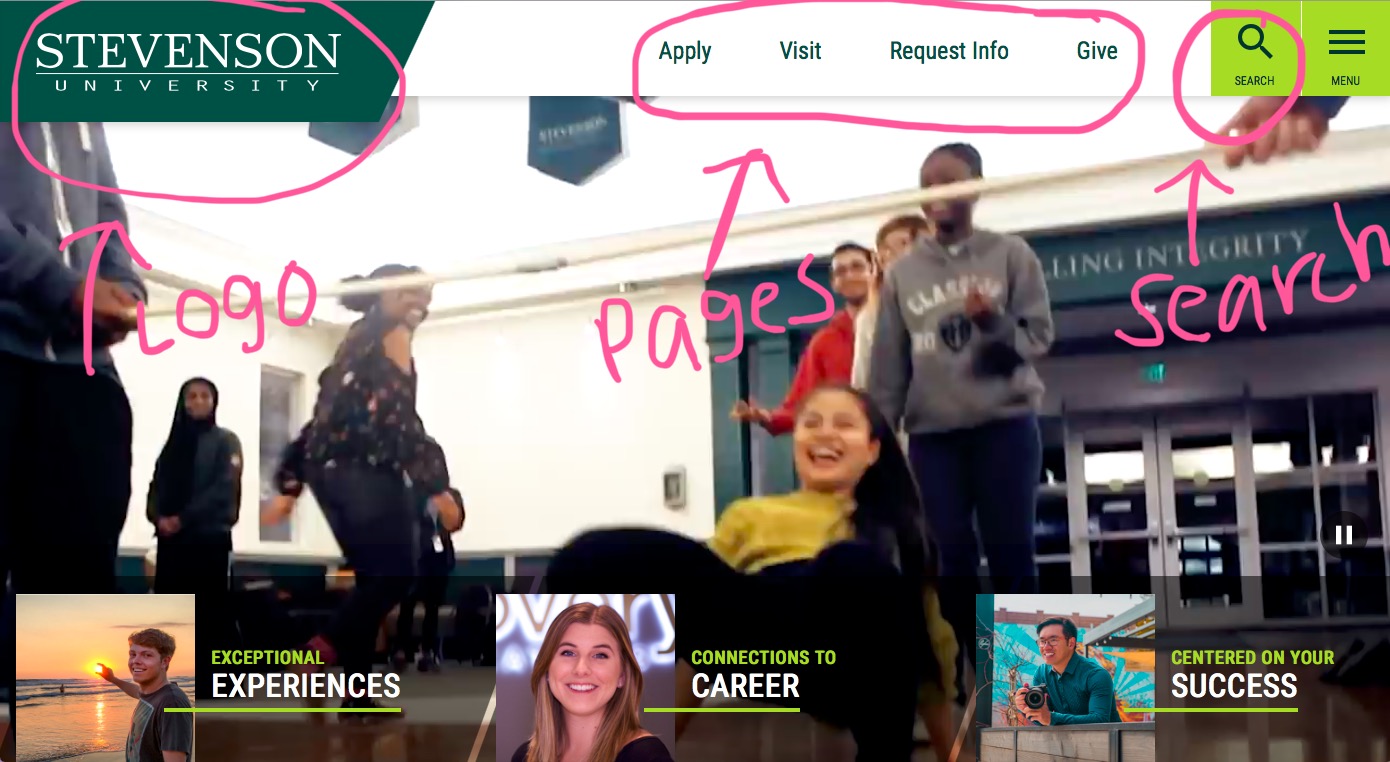
As you can see, Stevenson University is also a non-profit organization that has a similar format the Esperanza Center Website. They both have their logos in the upper left-hand corner and search button on the upper left corner. The pages to find more information are located in the middle and has a pretty consistent color scheme going on for each website. Below you can see the similarities on the Esperanza Center website.

This source uses multiple modes used to grasp the attention of their readers which was were linguistic, visual, spatial and gestural.
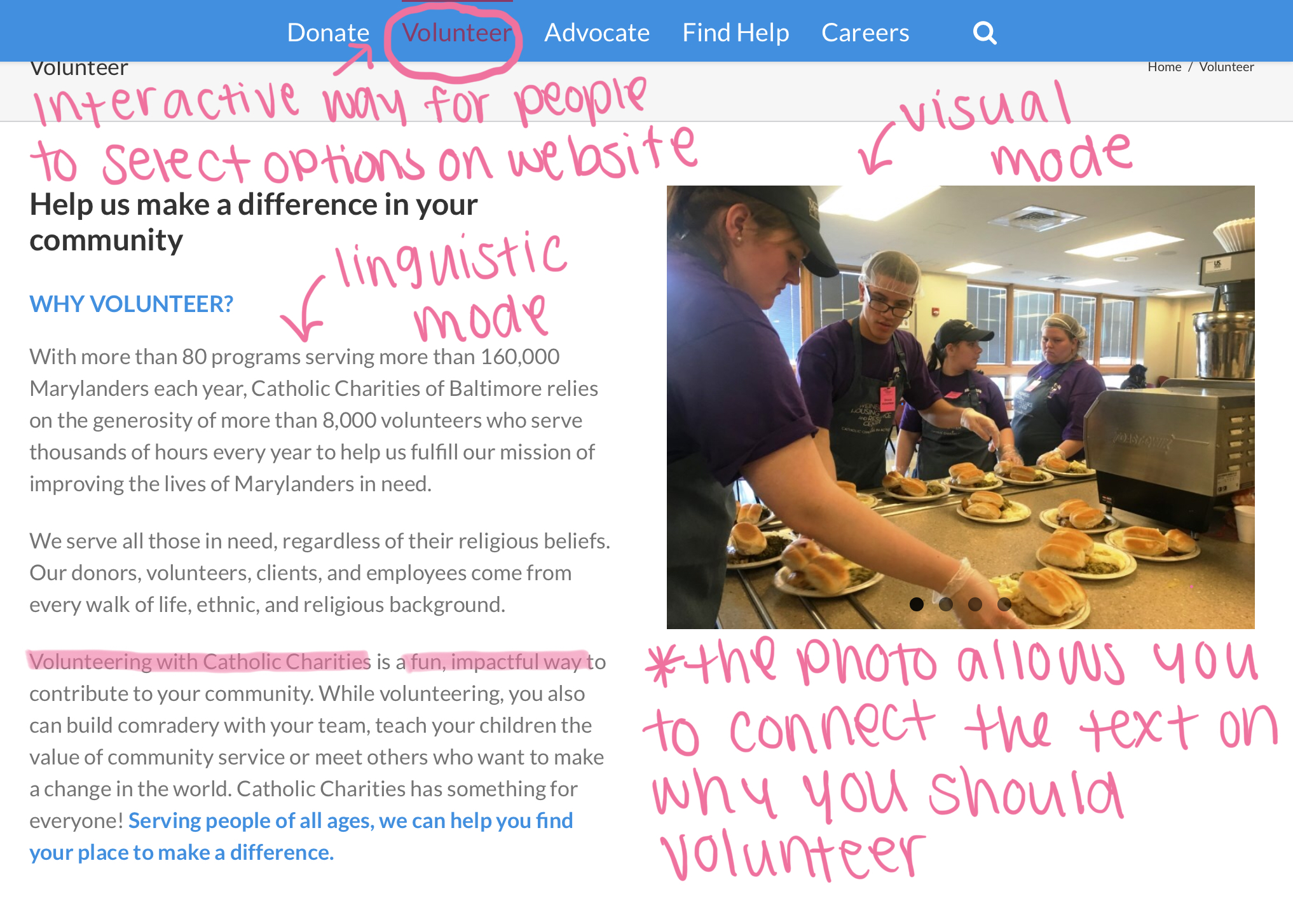
The linguistic mode explains the author’s thoughts in written text but is helped by visual mode to represent what the organization does. For example, on their volunteer page, users will find information on ways you can volunteer at their facility then shows a photo of volunteers helping serve food.

The spatial mode serves as a visual alignment where the user can focus on the information needed in a organized way that makes it interesting. For example, in the events page, there are small calendars on the right hand side that for a overall visual of the month but on the left there are specific dates for the user to focus on which makes it interesting.
The Gestural Mode serves as an interactive tool on a website. This is represented through clicking of links or through a gallery. For example, on the website the user is able to click on different pages or on different posts to get more information or is able to donate using the donate button. By swiping up and down is also an example of gestural since the user has to move the page up and down by touching the screen.
CONCLUSION
This source has everything a religious, non-profit would have based on their colors and layout of the website. It is easily noticed who they are trying to reach and what their purpose is. The use of visuals and linguistics allows the user to grasp a better understanding of what they are trying to accomplish. After analyzing the Esperanza Center, I feel the author executed their strong sense of author, purpose, context, author, and genre by using organization and persuasion to help their users learn more information about their organization. I would say that they should add more colors to help brighten their landing page since it seems light. Another suggestion would be to add testimonies on the landing page instead of news so that the new people on the website can see what their organization has done. I feel those testimonies could be more from donators and volunteers since they are the ones persuading others to join this organization and support the Esperanza Center.
REFERENCES
Arola, Kristin L., et al. Writer-Designer: a Guide to Making Multimodal Projects. Bedford/St. Martin’s, 2014.
“What is a Non Profit Organization (NPO)? Definition and Meaning.” BusinessDictionary.com, www.businessdictionary.com/definition/non-profit-organization-NPO.html.